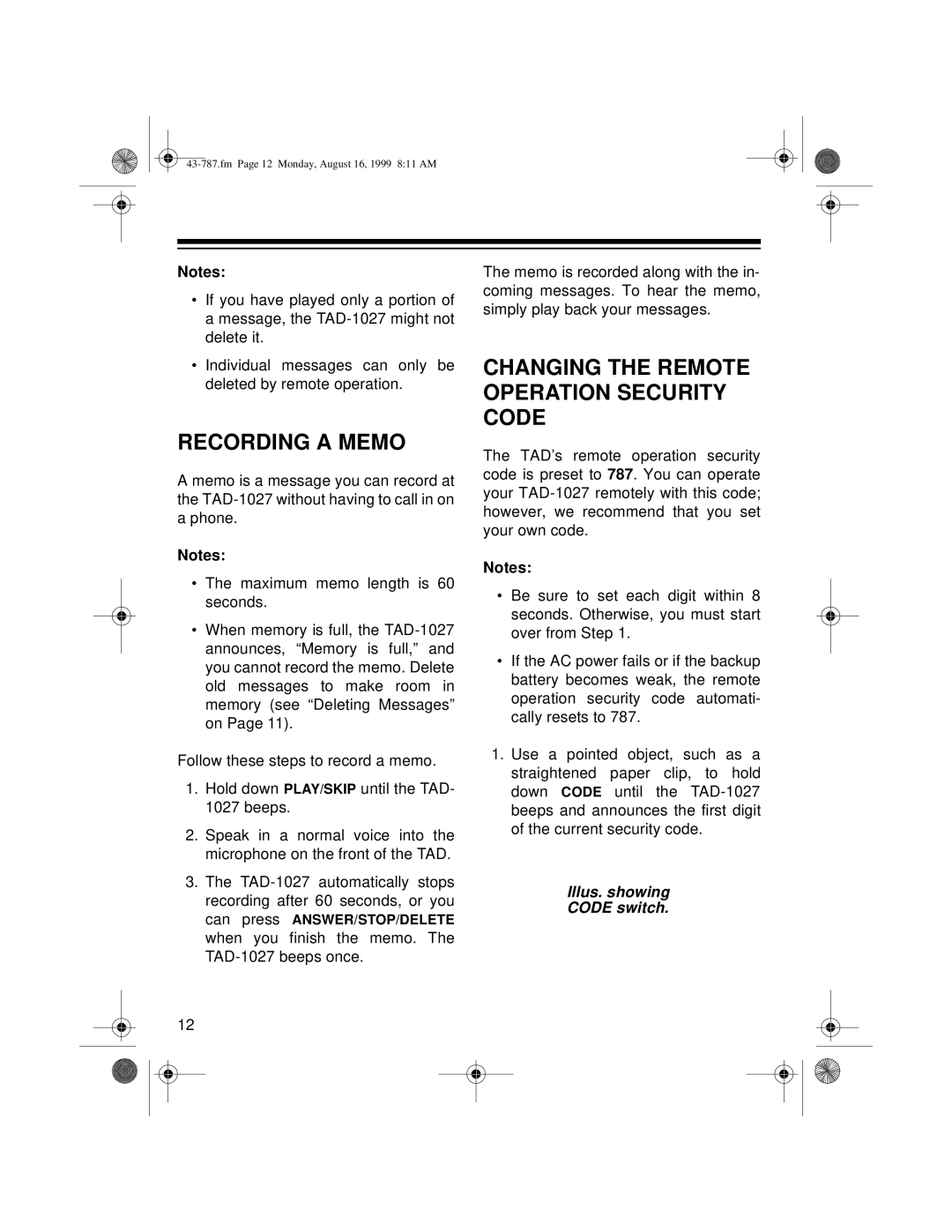TAD-1027 specifications
The Radio Shack TAD-1027 is a versatile and innovative answering machine that reflects the technological advances of the late 20th century. As a prominent product during its time, the TAD-1027 offered numerous features that appealed to both home and office users. Its design was compact, making it easy to place on a desk or shelf while remaining user-friendly and efficient.One of the standout features of the TAD-1027 is its digital storage capability, allowing users to record and store up to 15 minutes of messages. This represented a significant advancement from earlier cassette-based answering machines, providing clearer audio quality and eliminating the hassle of replacing tapes. The machine's digital technology ensured that messages were easily accessible and could be played back with clarity.
The TAD-1027 was equipped with an intuitive interface that included a bright LED display, making it easy for users to keep track of incoming messages. Additionally, the unit offered various playback options, including slow playback, which allowed users to listen to messages at a more manageable speed. This feature was particularly useful for users who wanted to record important details without missing any information.
A key characteristic of the TAD-1027 was its capability for remote access. Users could retrieve their messages from any telephone, providing valuable convenience for business people on the go. This feature reflected the answering machine's versatility, making it a useful tool not just for home users but also for professionals needing to stay connected.
Furthermore, the TAD-1027 had a built-in speakerphone feature, allowing for hands-free conversations. This feature was especially appreciated in busy environments where multitasking was essential. The quality of the speakerphone ensured that users could communicate clearly without the need to hold the phone.
Overall, the Radio Shack TAD-1027 exemplified the evolution of personal communication devices during its era. With its digital storage, easy interface, essential playback features, remote access capabilities, and speakerphone utility, the TAD-1027 catered to the needs of various users. It remains a notable piece of technology history, showcasing the innovative spirit of the late 20th century in home and office communication.

